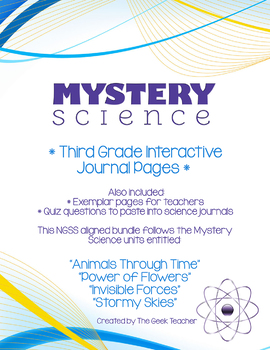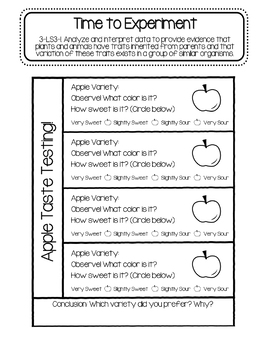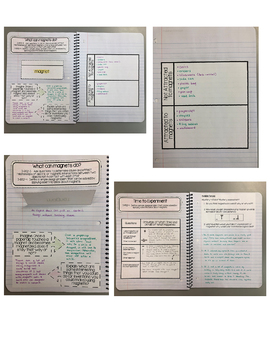3rd Grade Science Journals - Mystery Science Bundle (Updated August, 2022)
- Zip
What educators are saying
Products in this Bundle (6)
showing 1-5 of 6 products
Description
Thank you for your interest in my 3rd Grade Interactive Journal Pages, based on the Next Generation Science Standards in conjunction with the Mystery Science video curriculum program! Mystery Science has excellent exploration videos and activities, and the journal pages provide a space and a guide to think critically about science concepts. The pages also serve as an information guide for students to refer back to as they review concepts and standards throughout the year.
These pages will encourage reflective thinking, imagination, sketching with detail, and the learning of scientific vocabulary. Each set of pages includes a title and NGSS standards.
What’s Included:
- Pages for each mystery (as of August, 2022), which will include relevant vocabulary, sketches, and quiz questions
- Exemplars for each page, along with vocabulary definitions, sample sketches, and detailed answers to the journal and quiz questions
Third Grade NGSS Standards Covered:
- 3-PS2-1: Plan and conduct an investigation to provide evidence of the effects of balanced and unbalanced forces on the motion of an object.
- 3-PS2-2: Make observations and/or measurements of an object’s motion to provide evidence that a pattern can be used to predict future motion
- 3-PS2-3: Ask questions to determine cause and effect relationships of electric or magnetic interactions between two objects not in contact with each other.
- 3-PS2-4: Define a simple design problem that can be solved by applying scientific ideas about magnets.
- 3-5-ETS1-1: Define a simple design problem reflecting a need or a want that includes specified criteria for success and constraints on materials, time, or cost.
- 3-5-ETS1-2: Generate and compare multiple possible solutions to a problem based on how well each is likely to meet the criteria and constraints of the problem.
- 3-5-ETS1-3: Plan and carry out fair tests in which variables are controlled and failure points are considered to identify aspects of a model or prototype that can be improved.
- 3-LS1-1 - Develop models to describe that organisms have unique and diverse life cycles but all have in common birth, growth, reproduction, and death.
- 3-LS3-1 - Analyze and interpret data to provide evidence that plants and animals have traits inherited from parents and that variation of these traits exists in a group of similar organisms.
- 3-LS3-2 - Use evidence to support the explanation that traits can be influenced by the environment.
- 3-LS4-3 - Construct an argument with evidence that in a particular habitat some organisms can survive well, some survive less well, and some cannot survive at all.
- 3-ESS2-1 Represent data in tables and graphical displays to describe typical weather conditions expected during a particular season.
- 3-ESS2-2 Obtain and combine information to describe climates in different regions of the world.
- 3-ESS3-1 Make a claim about the merit of a design solution that reduces the impacts of a weather-related hazard.
- 3-5-ETS1-1 Define a simple design problem reflecting a need or a want that includes specified criteria for success and constraints on materials, time, or cost.
- 3-5-ETS1-2 Generate and compare multiple possible solutions to a problem based on how well each is likely to meet the criteria and constraints of the problem.
- 3-5-ETS1-3 Plan and carry out fair tests in which variables are controlled and failure points are considered to identify aspects of a model or prototype that can be improved.
- 3-LS3-1 – Analyze and interpret data to provide evidence that plants and animals have traits inherited from parents and that variation of these traits exists in a group of similar organisms.
- 3-LS4-1 – Analyze and interpret data from fossils to provide evidence of the organisms and the environments in which they lived long ago.
- 3-LS4-2 – Use evidence to construct an explanation for how the variations in characteristics among individuals of the same species may provide advantages in surviving, finding mates, and reproducing.
- 3-LS4-3 – Construct an argument with evidence that in a particular habitat some organisms can survive well, some survive less well, and some cannot survive at all.
- 3-LS4-4 – Make a claim about the merit of a solution to a problem caused when the environment changes and the types of plants and animals that live there may change.
You can access the Mystery Science curriculum at: https://mysteryscience.com





